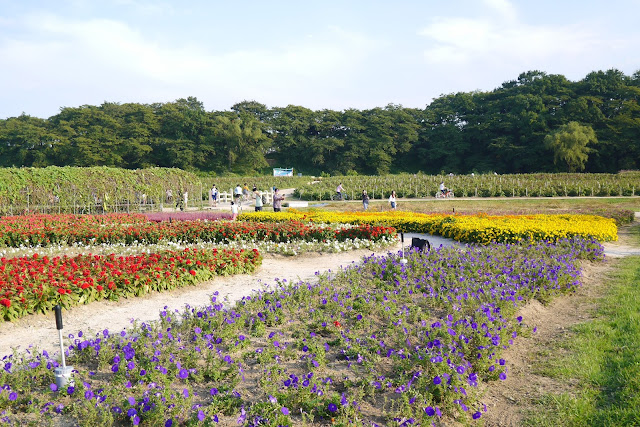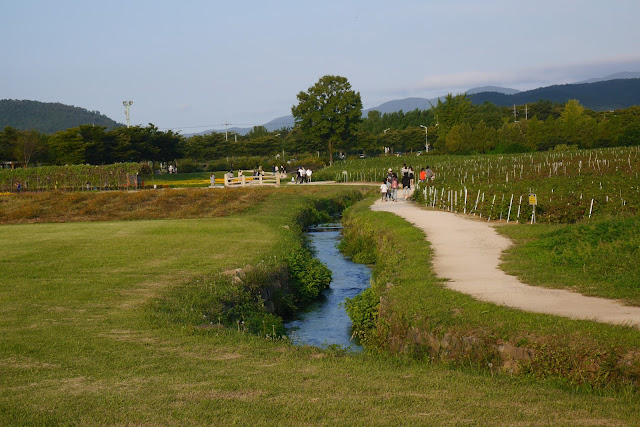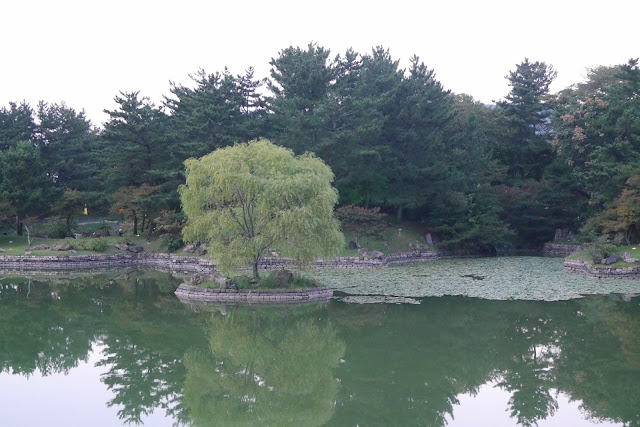Hello everyone~~~ This is finally the first post of my long awaited Korea trip with my family in September. I'm so sorry this took so long to do up because I was literally swamped with work and school every single day and I had so much to catch up on because of my holiday. But! I am finally back to blogging again. Hopefully I'll manage to find time to do up my blog posts (and travel vlogs!) so that this space won't be majorly neglected again.
We took a night flight to Seoul and I basically spent most of the flight time watching back-to-back movies because I'm crazy like that. I really should be slept more on the plane but I was way too hyped up about the trip to even contemplate sleep.
The first thing we did was to grab our SIM cards at Incheon Airport then took the AREX over to Seoul Station before taking the KTX to Gyeongju. Mum wanted to visit Gyeongju and see all the ancient historical sites there so that was what we did for 3 days.
Note to self, don't buy KTX tickets in advance next time because you will never know what may happen to cause delays!
We took a cab to our hotel (Gyeongju Tourist Hotel DY) to place our luggages before heading back out again. (You can see our room in my Vlog below.) The hotel wasn't anything fancy, and they didn't even provide breakfast..... But it's okay.
Went down to the Paris Baguette which was a 3 minute walk away from our hotel to grab sandwiches before heading off to do some sightseeing.
While walking to our first destination, we saw amazing street art! If only Singapore was more open to art forms like these.
When we were in Korea, it was approaching Fall and the weather was amazing. It's cool enough to wear a jacket when the wind blows or if you're generally more scared of the cold, or you can do without it as well. My whole family revelled in the amazing weather. It makes for really enjoyable walked in nature because it isn't humid and definitely isn't hot.
Our first stop of the day was Cheomseongdae Observatory.
Cheomseongdae is the oldest existing astronomical observatory in Asia. Constructed during the reign of Queen Seon-deok (632-647), it was used for observing the stars in order to forecast the weather. This stone structure is a beautiful combination of straight lines and curves, and was designated as National Treasure No.31 on December 20th, 1962.
Cheomseongdae was built in a cylinder shape with stones 30cm in diameter. 362 stones were piled up to make 27 levels. Roughly 4.16m up from the bottom there is a 1㎡ square entrance and a space to hang a ladder under it. The inside is filled with soil up to the 12th level, and the 19th, 20th, 25th, and 26th levels all have long rocks hanging on two areas, shaped as the Chinese letter '井' (jeong).
It stands 9.17m high and the base stone on each side measures 5.35m. The Vernal Equinox, Autumnal Equinox, Winter Solstice, Summer Solstice and the 24 solar terms (also known as the astronomical solar year) were determined by the observation of stars. The pavilion stone is believed to have been used as a standard of deciding directions, north, south, east and west. The 362 stones used to build Cheomseongdae represented the 362 days in a lunar year. (Credit: x)
Cheomseongdae Observatory
Address:
| 169-5, Cheomseong-ro, Gyeongju-si, Gyeongsangbuk-do |
How to get here:
1. From Gyeongju Intercity Bus Terminal, take bus 10, or 11 and get off at Silla Hoegwan or Wolseong-dong Community Center Bus Stop.
There were many of these mini hills scattered all over the place. I believe they are like mini "fake" tombs where people can just run up and down and stand on. Gyeongju has many tombs (similar to the pyramids in Egypt) where they bury dead kings and queens of the Silla Dynasty. I'll talk more about them when I blog about Daereungwon Tomb Complex.
Gyerim Forest is just a stone's throw away from Cheomseongdae Observatory and is one of the recommended places to go (although I don't really know why because there isn't much to do or see there).
Gyerim Forest is located between the Cheomseongdae Observatory and Wolseong Fortress. The forest is thickly populated by ancient zelkova and willow trees rooted on gently sloping hills and along the small stream in the northwest part of the woods. According to legend, the forest is closely associated with myths surrounding the birth of Alji, the founder of the Gyeongju Kim clan. As such, it is designated national Historic Site No. 19.
Legend has it that King Talhae heard a rooster crying from deep inside the Sirim Woods. Chancellor Hogong was sent to investigate. Upon arriving, he found a rooster crying underneath a tree on which hung a golden box. Hogong immediately reported his find to the king, who instructed him to bring the golden box into the palace. The king opened the box and found a small child inside, Kim Alji. The forest, which had previously been called ‘Sirim’ or ‘Gurim’, became known as ‘Gyerim’, ('gye’ meaning rooster). The name Gyerim was also used to refer to the Silla kingdom.
Alji was adopted as the king’s son, but because the crown was passed on to King Pasa of the Park family, he never ascended the throne. The Kim clan later became the royal bloodline with the coronation of King Naemul some years later.
The memorial stone recording the birth of Kim Alji was erected in the third year of King Sunjo's rule in the Joseon Dynasty. Located close to the royal fortress of Silla, the forest is still deeply revered as the mystical birthplace of the first ancestor of the royal Kim clan of Silla. Yellow canola blossoms along the path connecting Daereungwon with Gyerim and Banwolseong only add to the magical ambiance of the forest. (Credit: x)
Gyerim Forest
Address:
| 1, Gyo-dong, Gyeongju-si, Gyeongsangbuk-do |
The last stop of the day was Wolji Pond. It is located just across the road from Cheomseongdae Observatory so everything we visited is basically located around the same area.
According to the historical records of ‘Samguk-sagi,’ Anapji Pond was built during the 14th year of King Munmu (in power 661-681 AD) of the Silla Kingdom (57 BC-935 AD). Small mountains were created inside the palace walls, beautiful flowers were planted, and rare animals were brought in to create an exquisitely exotic garden fit for royalty. The pond was originally built in Wolseung Fortress (erected in 101 AD during the Silla period), but the fortress was destroyed and now lies in ruins. (Credit: x)
Wolji Pond (or Anapji Pond) is better visited in the evening because that's when the lights start coming out. So I would say go there before the sun set and stay till after the sun sets to see 2 totally different looks of the place.
Wolji Pond
Address:
| 102, Wonhwa-ro, Gyeongju-si, Gyeongsangbuk-do |
Admission fee: 2,000 KRW/pax
How to get here:
1. From Gyeongju Intercity Bus Terminal, take bus 600. Get off at Anapji Entrance Bus Stop.
And now finally, for the first time ever, I did up a travel vlog. I'm sorry that it is pretty shaky because I haven't got the hang of filming while walking.

























































1 comment:
Great informative post! Do check out our Gyeongju Travel Itinerary as well!
Tom & Kate,
2bearbear.com
Post a Comment